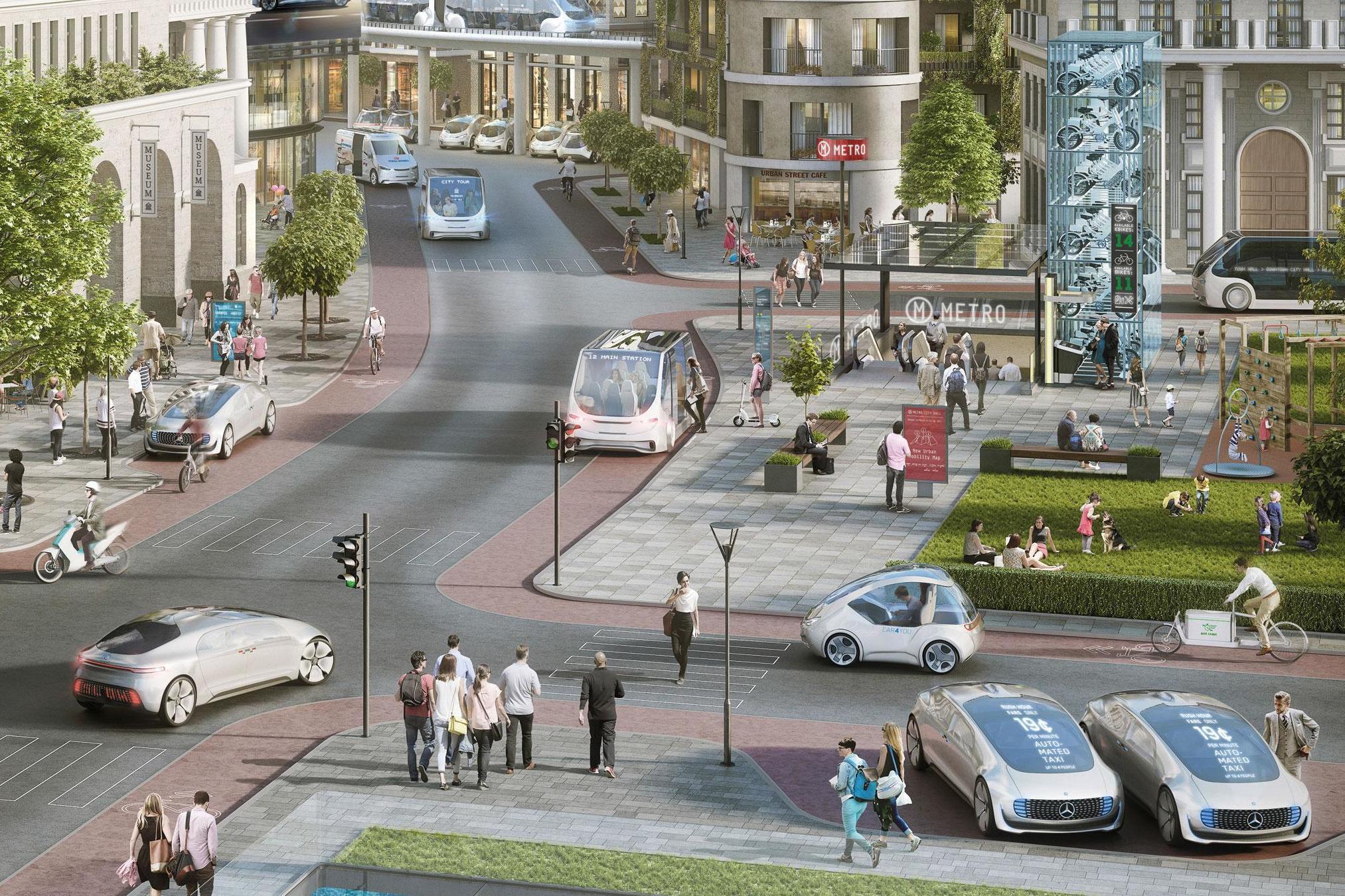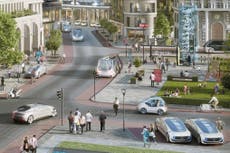I flew all the way to Germany to experience a driverless car and it was the most underwhelming experience of my life
Promised a driverless car 'experience', I thought I might catch a glimpse of my sci-fi fantasy. Instead, Buzz Killington grabbed an industrial-sized hoover and sucked all the joy from my childhood utopia

When I think of the future, I think of the opening sequence to Matt Groening’s sci-fi series Futurama. It’s a world where humanoids zip through translucent tubes that twist through a scramble of city skyscrapers and fluorescent space pods spin around vast electronic billboards advertising in ten different languages. I have a crush on a curvaceous ginger cyclops. This world will come to pass in my lifetime.
Then I travelled to Germany. I no longer think these things. Promised a driverless car “experience”, I thought I might catch a glimpse of my sci-fi fantasy, since driverless cars may as well be space pods for all I know. I didn’t. Instead, Buzz Killington grabbed an industrial-sized hoover and sucked all the joy from my childhood utopia.
For starters, it wasn’t driverless. When you read headlines that claim driverless cars will be on the roads by the next decade, make sure you understand the small print. There are six levels of automation. 0 is no automation, 5 is full automation – no level of human interference required. But it appears that level 3 is actually the point at which cars start being described as “driverless” rather than “driver assisted”. At level 3, the car does most of the driving, but humans are required to stay alert and take over the controls in certain situations. Tesla currently has level 2 models out on the market. Bosch, in collaboration with Daimler, is taking aim at level 4 & 5.
But even that requires further qualification. I was driven around a limited area of circular test track by level 3 technology, but to get there and back a human had to be at the controls. That will mean that when it does make it to market, which Bosch aims to achieve by 2020/21, consumers will only be able to use it on designated roads that have already been rigorously tested by their computer systems.
And here’s the clincher: you won’t want to pay for it. Bosch says the technology will cost between £4,500 and £10,000 to install. They admit few would splash that cash. Why not? Because it’s no great shakes. I trundled around the track at about 20kph while squished against three sizeable German men, one armed with an ergonomic keyboard. I sat there and watched the steering wheel move about a bit while another man explained how the system managed the transition from human to computer control.
Until driverless cars are ready to be rolled out onto the mass market, it has limited benefits. Bosch is working on a personal assistant, which allows you to access things like online shopping while your car drives you around. They say it will turn the car into “a third-living environment”, which sounds rather like a glorified caravan.
It might save your arms half an hour of energy expenditure, but it won’t save lives until everyone has one. The problem is, no one really seemed to know when economies of scale would bring prices down. As for level 5, the real futuristic fantasy, neither the technology nor the infrastructure will be capable of delivering on a mass scale until 2050 at the earliest, probably beyond. At this point it’s just conjecture.
In the interests of fairness, Bosch should not pick up the slack for my own ignorance. What did I expect? To be thrown around the backseat of a car while a computer pegs it through the streets of Stuttgart at 100 miles an hour? A long-term project should not suffer the opprobrium of my impatience.
It is not beyond possibility that automation could reduce traffic fatalities to negligible levels in the developed world, and it is worth taking a moment to understand how that will work.
Vehicles can already react faster than humans, through automated emergency braking, for example. But to work safely on the roads they will also have to anticipate and analyse better than us.
Take a ball rolling onto a road. A driver will see the ball, understand that it is a ball, anticipate a child running out to collect the ball and act accordingly, braking or accelerating depending on their mood. Each variable is taken into account when making a decision, and that calculation takes time. Bosch predicts that an AI driverless car computer will be capable of three times as many of these kinds of operations per second as the human brain. To do that it has to be exposed to millions of these kinds of objects and fed information about what they mean, again, again and again. The mind boggles.
In the driverless future, whenever that might be, vehicle sharing will rise and traffic congestion, which is closing on capacity, will retreat to functional levels.
But I have little time for fairness when my cartoonish reverie has been ruthlessly redrawn using the blunt end of an HB pencil.
Transportation always figures heavily in sci-fi renderings of our future world: Blade Runner, Back to the Future, even Doctor Who’s Tardis. They all have one thing right: the way we travel will change beyond recognition. But it will take longer than you think and it won’t be half as much fun.
It will be safe. It will be methodically controlled and ordered. Nothing will go wrong. We will all be eating packets of plain space food ordered electronically from a shared vehicle.
The future’s shite; the future’s porridge.


Join our commenting forum
Join thought-provoking conversations, follow other Independent readers and see their replies